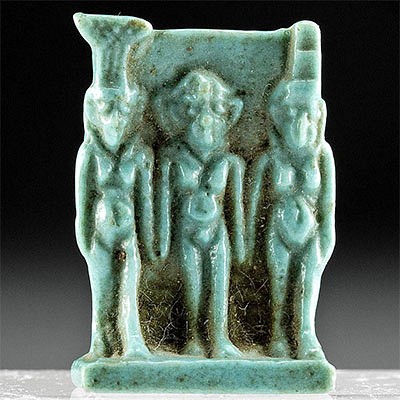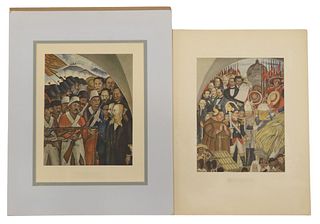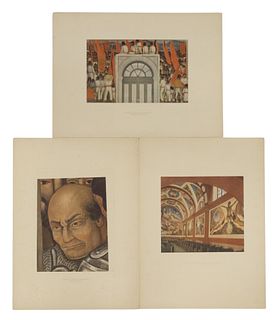Norman Rockwell Lithograph - "Breaking Home Ties" 1970s
Lot 343
About Seller
Artemis Fine Arts
686 S Taylor Ave, Ste 106
Louisville, CO 80027
United States
Selling antiquities, ancient and ethnographic art online since 1993, Artemis Gallery specializes in Classical Antiquities (Egyptian, Greek, Roman, Near Eastern), Asian, Pre-Columbian, African / Tribal / Oceanographic art. Our extensive inventory includes pottery, stone, metal, wood, glass and textil...Read more
Categories
Estimate:
$1,000 - $1,500
Absentee vs Live bid
Two ways to bid:
- Leave a max absentee bid and the platform will bid on your behalf up to your maximum bid during the live auction.
- Bid live during the auction and your bids will be submitted real-time to the auctioneer.
Bid Increments
| Price | Bid Increment |
|---|---|
| $0 | $25 |
| $300 | $50 |
| $1,000 | $100 |
| $2,000 | $250 |
| $5,000 | $500 |
| $10,000 | $1,000 |
| $20,000 | $2,500 |
| $50,000 | $5,000 |
| $100,000 | $10,000 |
| $200,000 | $20,000 |
About Auction
By Artemis Fine Arts
Aug 5, 2021
Set Reminder
2021-08-05 10:00:00
2021-08-05 10:00:00
America/New_York
Bidsquare
Bidsquare : VARIETY SALE | Antiquities & Ethnographic Art
https://www.bidsquare.com/auctions/artemis-gallery/variety-sale-antiquities-ethnographic-art-7292
Featuring classical antiquities, ancient and ethnographic art from cultures encompassing the globe. Egyptian, Greek, Roman, Etruscan, Near Eastern, Asian, Pre-Columbian, Native American, African / Tribal, Oceanic, Spanish Colonial, Russian, Fossils, Fine Art, more! Artemis Fine Arts info@artemisfinearts.com
Featuring classical antiquities, ancient and ethnographic art from cultures encompassing the globe. Egyptian, Greek, Roman, Etruscan, Near Eastern, Asian, Pre-Columbian, Native American, African / Tribal, Oceanic, Spanish Colonial, Russian, Fossils, Fine Art, more! Artemis Fine Arts info@artemisfinearts.com
- Lot Description
Norman Rockwell (American, 1894-1978). "Breaking Home Ties (Boy and Father Sitting on Truck)" lithograph, ca. 1970s. "a/p" on lower left to indicate this is an artist proof. Norman Rockwell initials and signature embossed in gold below image on lower right. Blind embossed Norman Rockwell seal of approval on lower right. Blind embossed seal of Atelier Ettinger Inc. Logo of Eleanor Ettinger is embossed in silver. Norman Rockwell created this composition for the cover of The Saturday Evening Post on September 25, 1954. Highly regarded as one of Rockwell's most impressive works, the image depicts a father and son as they await a train that will take the young man to the state university. Notice the pile of books stacked upon his suitcase which is decorated with a red and white "State U" pennant. This image was voted the second most popular cover in the history of the Saturday Evening Post. Size of plate: 25.25" L x 23.375" W (64.1 cm x 59.4 cm) Size of sheet: 31" L x 27.875" W (78.7 cm x 70.8 cm)
A remarkable storyteller, Rockwell presents the youth as he is about to leave his home in New Mexico for the first time, sitting on the family's farm truck with his father, as his loyal dog waits beside them. One can also see a ticket in the son's pocket as well as a single rail on the lower right corner, indicating that they are awaiting the train at a whistle stop. The student is dressed in his finest - white slacks and a matching jacket with fancy socks, dress shoes, and tie. Neatly coiffed, he looks ahead as if eagerly anticipating the next chapter of his life. In the meantime, his father, sits in a somewhat hunched position, wearing blue denim and holding his as well as his son's hat in his hands - perhaps suggesting that he is sad to let his son go. He gazes in the opposite direction, peering up the train track, not looking forward to the arrival of the locomotive that will take his son away. He has a lantern and a red flag beside him, which he will unwillingly use to signal the train to stop for his son. The pair's legs touch, indicating their strong connection and family ties.
Here are Rockwell's endearing words about this composition, "I once did a cover showing a father seeing his son off to college. That year my three boys had gone away and I'd had an empty feeling it took me a while to adjust without them. This poignancy was what I wanted to get across in the picture...I put a funny kind of suit on the boy because he was a ranch boy leaving home for the first time I got most of my fan letters about the dog. You see the father couldn't show how he felt about the boy's leaving. The dog did."
Rockwell's painting of this composition sold at Sotheby's for $15.4 million on November 29, 2006 - a record-breaking amount paid for a Rockwell at that time.
Provenance: Private Fayetteville, Arkansas, USA collection
All items legal to buy/sell under U.S. Statute covering cultural patrimony Code 2600, CHAPTER 14, and are guaranteed to be as described or your money back.
A Certificate of Authenticity will accompany all winning bids.
Replace: PLEASE NOTE: Due to recent increases of shipments being seized by Australian & German customs (even for items with pre-UNESCO provenance), we will no longer ship Replace: most antiquities and ancient Chinese art to Australia & Germany. For categories of items that are acceptable to ship to Australia or Germany, please contact us directly or work with your local customs brokerage Replace: firm.
Display stands not described as included/custom in the item description are for photography purposes only and will not be included with the item upon shipping.
#163394"Arches France" watermark on upper right margin of sheet. "a/p" on lower left to indicate this is an artist proof. Norman Rockwell initials and signature embossed in gold below image on lower right. Logo of Eleanor Ettinger on lower right is embossed in silver. Blind embossed Norman Rockwell seal of approval on lower right. Blind embossed seal of Atelier Ettinger Inc. on lower left corner. Minor staining to lower margin. A few small crease marks that are most discernible on the verso.Condition
- Shipping Info
-
All shipping is handled in-house for your convenience. Your invoice from Artemis Gallery will include shipping calculation instructions. If in doubt, please inquire BEFORE bidding for estimated shipping costs for individual items.
-
- Buyer's Premium



 EUR
EUR CAD
CAD AUD
AUD GBP
GBP MXN
MXN HKD
HKD CNY
CNY MYR
MYR SEK
SEK SGD
SGD CHF
CHF THB
THB














